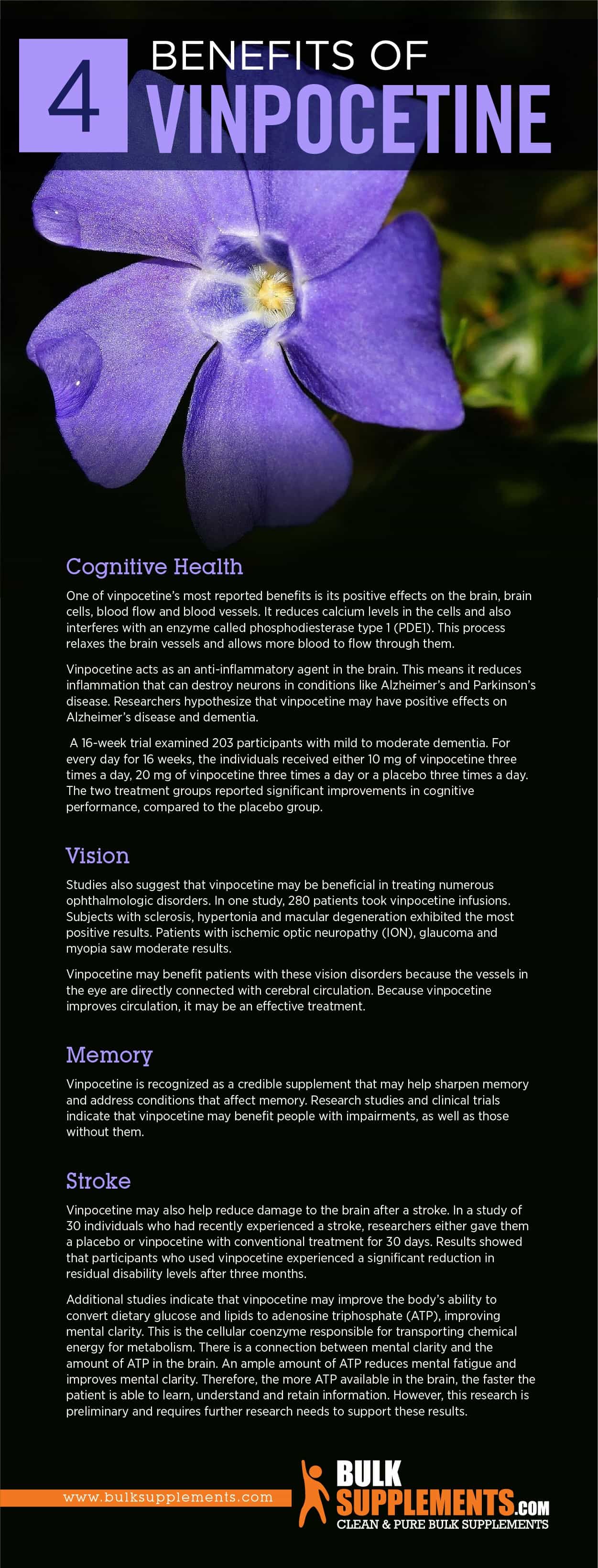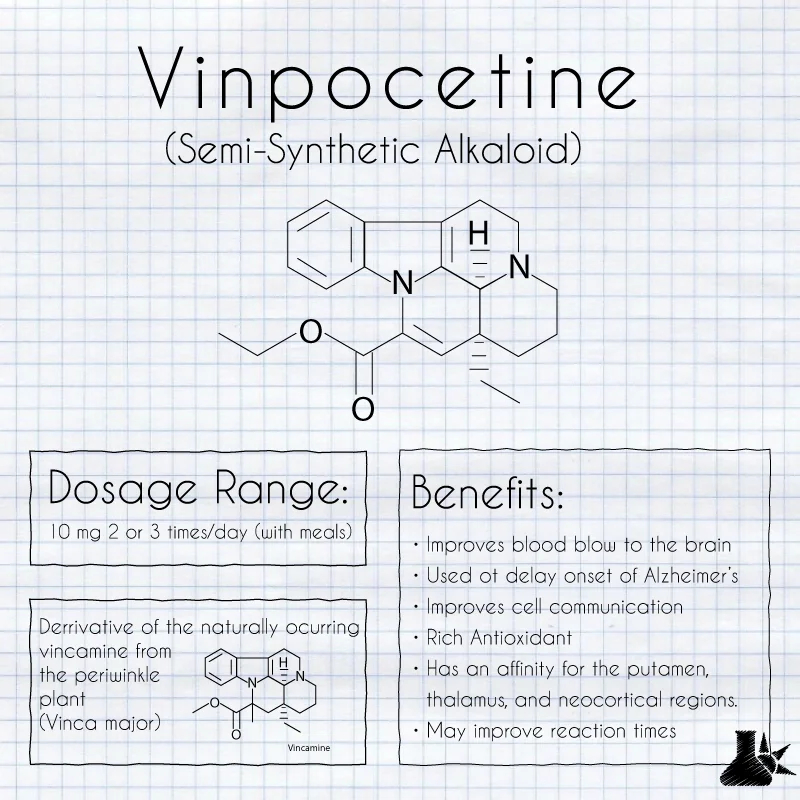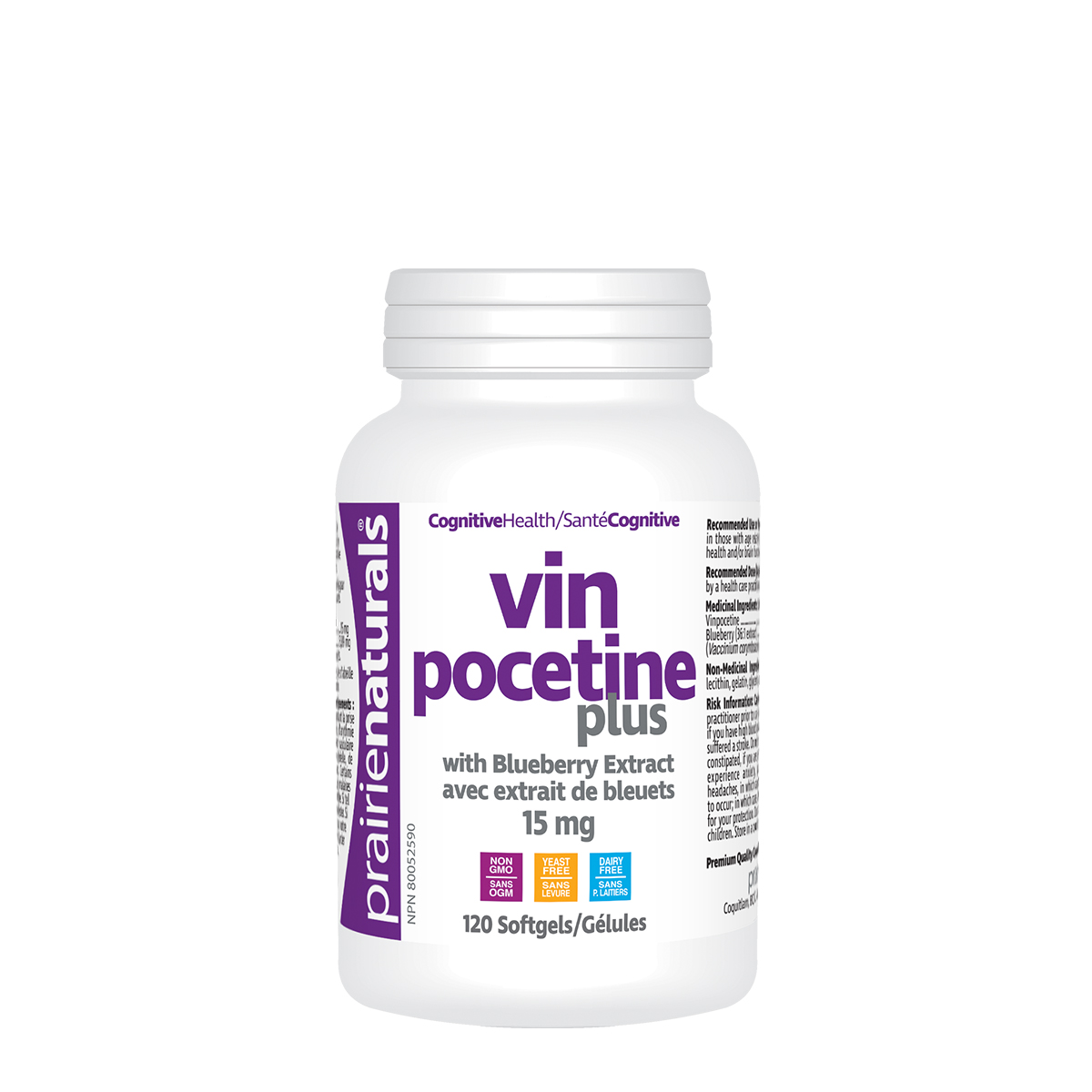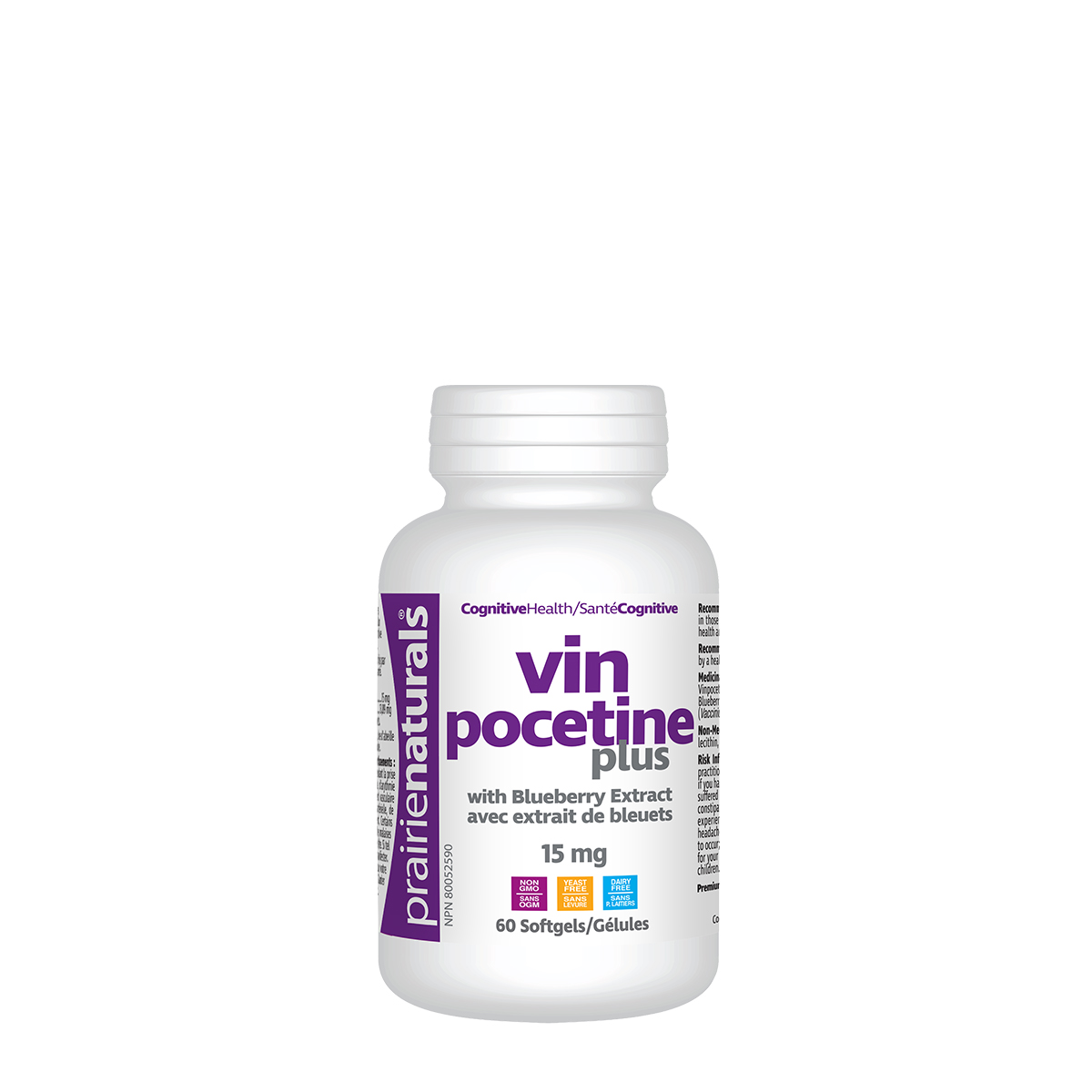What are the benefits of taking vinpocetine?

Vinpocetine inhibits PDE1 activity and improves cerebral blood flow by elevating cGMP and cAMP, increasing mitochondrial function, and improving glucose and oxygen utilization by the brain. Vinpocetine helps improve spatial memory in rats by preventing neuronal damage and favorably modulating cholinergic function ( 18 ).
What does vinpocetine do for the brain?
Vinpocetine is used to enhance memory and increase brain metabolism. It has also been used for ischemia and reperfusion injury, and is considered a neuroprotective agent. However, there are few robust clinical studies to support the use of vinpocetine in stroke, dementia, or other diseases of the CNS. Is vinpocetine banned? In the United States, vinpocetine is not regulated in the neutraceutical industry, and it is often included as an active ingredient in dietary supplements. Vinpocetine is banned from Australia, New Zealand, and Canada due to potential harmful nootropic characteristics as a cognitive enhancing supplement [1–3].
Accordingly, is oxiracetam a stimulant?
Oxiracetam (developmental code name ISF 2522) is a nootropic drug of the racetam family and a very mild stimulant. Several studies suggest that the substance is safe even when high doses are consumed for a long period of time. Keeping this in consideration, is oxiracetam an antioxidant? The effects of a nootropic drug, oxiracetam (50-100-200 mg/kg ip), and a potent antioxidant agent, ascorbic acid (62.5-125-250 mg/kg ip), administered alone or in combination, were investigated on scopolamine-induced amnesia in a mouse habituation test.
Is oxiracetam safe?
In single and repeated oral dosages up to 2,400 mg, oxiracetam is a safe compound. According to HZI Data Bank Classification Systems, oxiracetam is a vigilance-enhancing compound with some effects on spontaneous memory.






Similar articles
- What does vinpocetine do for the brain?
Vinpocetine can be used to improve memory and brain metabolism. Vinpocetine has been used to treat ischemia and reperfusion injuries and is considered a neuroprotective drug. There are not many clinical studies that support vinpocetine's use in stroke, dementia, and other diseases of the CNS.
- What foods contain vinpocetine?
Vinpocetine, a synthetic compound, is derived from vincamine (an alkaloid found in Vinca minor L. plants). Vinpocetine is found in Dietary Supplements Ethyl Apovincaminate. Vinpocetine for Common Periwinkles. Dhul H.
- Does vinpocetine increase dopamine?
Vinpocetine, a nootropic PDE-1 (PDE-1) inhibitor, acts as an indirect dopamine receptor agonist [12]. Pre-treatment with vinpocetine revealed a marked improvement in hyperlocomotion, anxiety, short-term memory and other symptoms in schizophrenia patients [13].
- Is vinpocetine banned?
Vinpocetine is not controlled in the US neutraceutical market. It is commonly used as an active ingredient in dietary supplement products. Vinpocetine is prohibited from Australia, New Zealand and Canada because of its potential nootropic properties as a cognitive-enhancing supplement [1-3].
- What are the benefits of taking astaxanthin?
- What are the benefits of taking magnesium glycinate?
- What are the benefits of taking lemons?
 Drugs Forum
Drugs Forum
